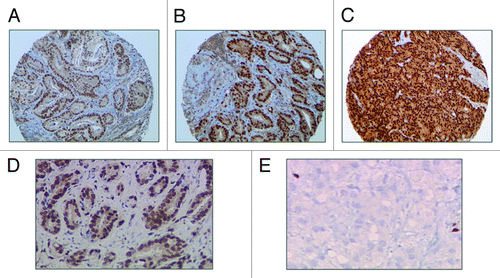APCaRI and UofA researchers could help diagnose prostate cancer severity more accurately
Adam Kinnaird is co-leading new research to develop precision diagnostics that could predict which men are at risk of more aggressive prostate cancer, based on mutations in their genes. (Photo: Faculty of Medicine & Dentistry; taken pre-COVID-19)
Folio Magazine, Published April 13, 2021 By Keri Sweetman
Scientists at the University of Alberta are part of a new research project to develop innovative precision diagnostics that could predict which men with prostate cancer are at risk of developing an aggressive form of the disease.
The researchers will use germline sequencing (sequencing of the genes a person is born with) to determine which genetic mutations predispose men to aggressive prostate cancer.
“Even though two men may have localized prostate cancer, their cases can be quite different depending on what genes have mutated,” explained John Lewis, who holds the Frank and Carla Sojonky Chair in Prostate Cancer Research funded by Alberta Cancer Foundation and is one of the project leaders. “The project will look at the contribution of your genetics to your risk of having aggressive prostate cancer.”
Prostate cancer is the most commonly diagnosed internal cancer in men in Canada and worldwide. The Canadian Cancer Society estimates that more than 23,000 men were diagnosed with prostate cancer last year, representing 20 percent of all new cancer cases in men.
The vast majority of men with prostate cancer have a non-aggressive form of the disease, at least at the time of initial diagnosis. But even as recently as 15 years ago, most of these men underwent surgery or radiation, which came with significant side effects such as incontinence, erectile dysfunction, and bowel problems.
Today, most men diagnosed with prostate cancer are placed on “active surveillance,” where they are monitored with yearly prostate-specific antigen (PSA) blood tests and biopsies to ensure their cancer has not progressed. When those yearly tests turn up evidence that the cancer is worsening, the patients are offered surgery, radiation, chemotherapy, or other treatments.
“We know, based on old data, that at least 30 percent of men will progress to worse tumours while we’re watching them,” said project leader Adam Kinnaird, a urologic surgeon, assistant professor in the U of A’s Department of Surgery and a member of the Alberta Prostate Cancer Research Initiative. “Is there a way from the get-go, when you start a man on active surveillance, that you can determine if his cancer is more likely to progress and require treatment?”
That’s the goal of the project, which aims to use new technologies to decide sooner which men are likely to develop more aggressive and potentially deadly prostate cancer.
Some mutations associated with aggressive prostate cancer have already been identified but the team will look for more, using unique germline-sequencing software designed by the University of California, Los Angeles’s Paul Boutros, a world leader in prostate cancer sequencing and a collaborator on this project.
Blood samples from almost 1,500 men who have been diagnosed with prostate cancer—including almost 300 from Edmonton—have been shipped to UCLA for sequencing over the next six months to a year. A seed grant from the U of A’s Precision Health Seed Fund Award will pay for the germline sequencing of the Edmonton samples, “allowing Edmonton to be part of an important multi-center and international project,” said Kinnaird. “This seed funding is critical because it allows us to take the first steps in the project,” he said.
Germline sequencing isn’t the only new precision strategy these scientists plan to use in their research.
In their larger research project, which has not yet been funded, they will focus on targeted biopsy, a new technique using multi-parametric MRI and ultrasound, to do more precise biopsies of hot spots in the prostate that are more likely to contain aggressive tumours. Kinnaird said funding from the University Hospital Foundation was recently used to purchase the first MRI/ultrasound fusion biopsy device for Edmonton.
Lewis said he is confident that once the larger project is funded and work begins on both germline sequencing and targeted biopsy, their research could change standard prostate cancer treatment within two or three years.
Lewis describes this scenario in the future: A man diagnosed with prostate cancer gives a blood sample, which is sequenced to look for germline mutations associated with aggressive cancer. Then, using the more accurate MRI/ultrasound targeted biopsy, doctors will be able to check his prostate for hot spots and predict more accurately whether he is likely to develop more aggressive cancer in the future.
“We want to improve outcomes,” said Lewis. “The goal would be, for men who go on active surveillance in Alberta, we want to have fewer failures.”
Find out more about the innovative precision health research happening at the U of A.

